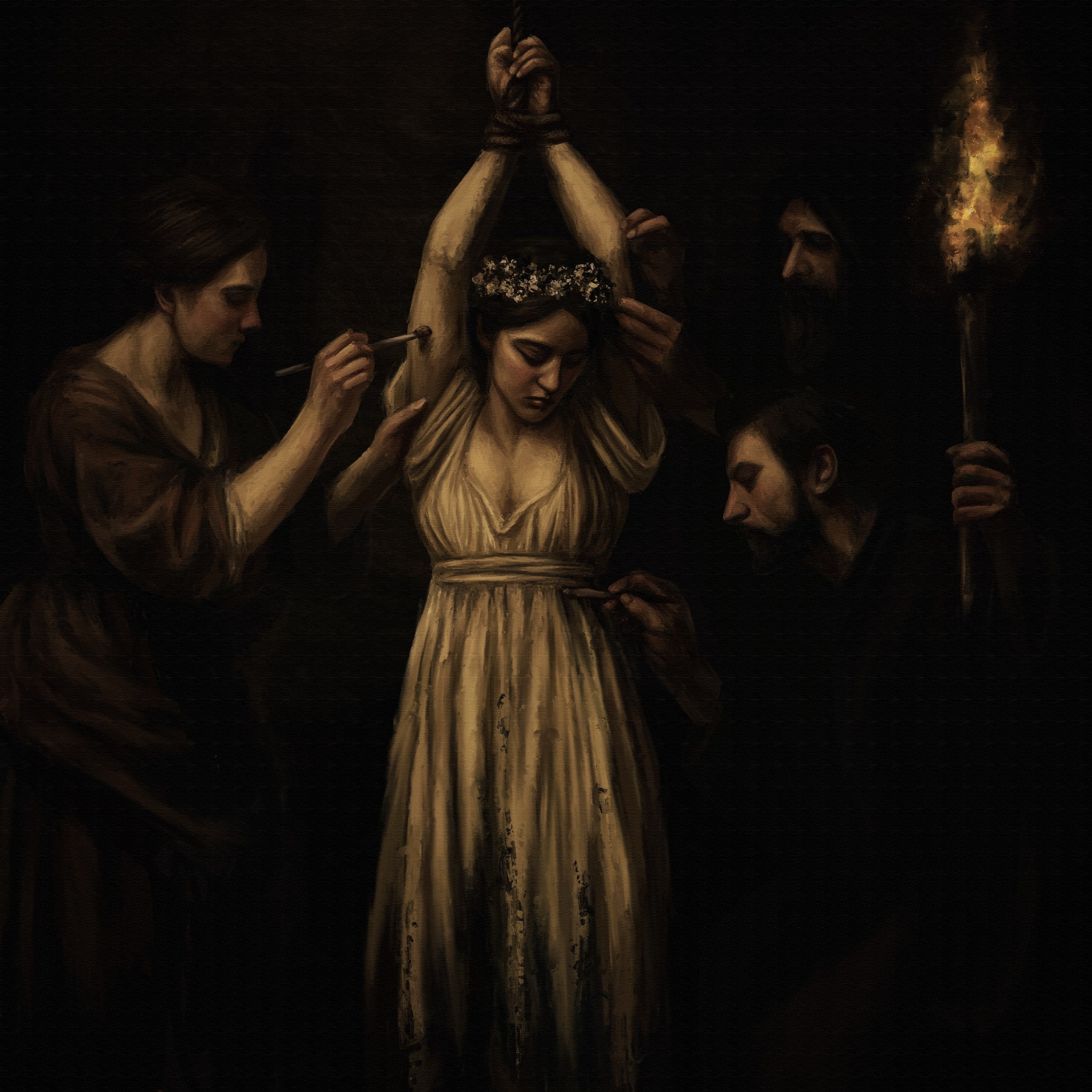
Preburn (2025)
Preburn captures the moment before annihilation. A woman stands bound at the wrists, her arms raised above her head as figures gather around her. One holds a torch, another a brush dipped in pitch, another steadies her arm with quiet precision. Her face is calm yet resolute, her floral crown still intact, her white dress absorbing the ochre light like a wick ready to ignite. The painting is suffocating in its stillness, heavy with the knowledge of what will come next.
⤷ Here, Cox strips martyrdom of spectacle. The focus is not on the flames or the chaos that will follow, but on the preparation—the sanctioned ritual of destruction carried out with almost surgical grace. Every gesture by the surrounding figures feels rehearsed, bureaucratic. They are not villains in their own eyes; they are performing duty, cleansing the impure, painting righteousness onto cruelty.
The woman’s serenity reads as both defiance and surrender. Her bowed head, crowned with flowers, echoes countless depictions of saints and sacrificial virgins, yet the scene’s lighting and framing invert holiness. The chiaroscuro no longer symbolizes divine revelation but the gulf between morality and ritualized violence.
In Preburn, Cox exposes the machinery of persecution: the collective belief that to destroy a woman’s body is to save her soul. The painting also resonates with contemporary anxieties—about public punishment, silenced rage, and the ways in which female suffering continues to be aestheticized and justified.
The restraint of the moment makes it unbearable. We are forced to look, to feel the seconds before fire meets fabric, to witness the beauty and horror of compliance.
0 Comments Add a Comment?